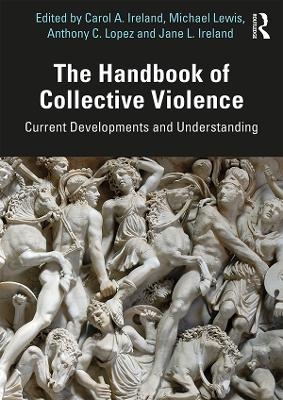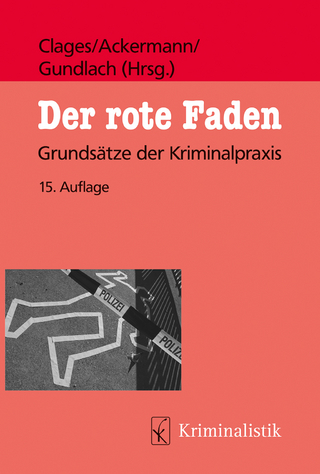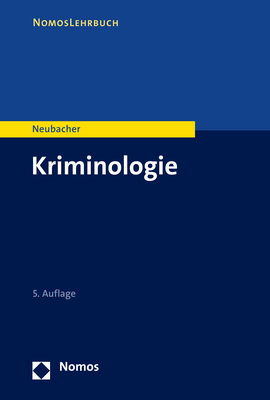
The Handbook of Collective Violence
Routledge (Verlag)
978-0-367-18654-8 (ISBN)
The first of its kind, The Handbook of Collective Violence covers a range of contexts in which collective violence occurs, bringing together international perspectives from psychology, criminology and sociology into one complete volume.
There have been significant advances made in the last 25 years regarding how collective violence is conceptualised and understood, with a move away from focusing on solely individual forms of violence toward examining and understanding violence that can occur within groups. This handbook presents some of the most interesting topics within the area of collective violence, drawing upon international expertise and including some of the most well-known academics and practitioners of our generation. Structured into four parts: understanding war; terrorism; public order and organized violent crime; and gang and multiple offender groups, this volume provides academics and practitioners with an up-to-date resource that covers core areas of interest and application.
Accessibly written, it is ideal for both academics and policymakers alike, capturing developments in the field and offering a deep theoretical insight to enhance our understanding of how such collective violence evolves, alongside practical suggestions for management, prevention and intervention.
Carol A. Ireland is a Consultant Chartered Psychologist, Forensic Psychologist and Chartered Scientist. She is a Reader in Aggression at the University of Central Lancashire and Senior Research Lead at the Ashworth Research Centre. She is also the Director of Studies for the MSc in Forensic Psychology. She holds a visiting/honorary professorship at Charles Sturt University. She currently works at the Coastal Child and Adult Therapeutic Services, working with children and adults who present with offence concerns and/or are victims. Michael Lewis is a Chartered Psychologist, Chartered Scientist, Associate Fellow of the British Psychological Society and Lecturer in Forensic Psychology at the University of Central Lancashire, Preston. He is the Research Lead for Policing and Security at the Ashworth Research Centre, Mersey Care NHS Trust, and as part of this role collaborates with numerous police forces across the UK. Dr Lewis is the Editor-In-Chief of the Journal of Criminological Research, Policy and Practice. Anthony C. Lopez is an Associate Professor of Political Psychology in the School of Politics, Philosophy, and Public Affairs, at Washington State University. Dr. Lopez serves as Associate Editor of Politics with the Evolution Institute and blogs regularly at Psychology Today. Jane L. Ireland is a Chartered Forensic Psychologist and Chartered Scientist, holds a Professorial Chair at the University of Central Lancashire and is Violence Treatment Lead within High Secure Services, Ashworth Hospital. She holds three further (visiting/honorary) professorships at Abo Akademi University, Charles Sturt University and Cardiff Metropolitan University. She is currently academic lead for the Ashworth Research Centre.
SECTION 1: Understanding war
Dr. Anthony Lopez
Chapter 1. The Evolution of Warfare
Dr. Anthony C. Lopez
Chapter 2: When Social Identity-defining Groups Become Violent: Collective Responses to Identity Uncertainty, Status Erosion, and Resource Threat
Dr. Sucharita Belavadi, Dr. Michael A. Hogg, Dr. Mark Rinella
Chapter 3: Emotional underpinnings of war: An evolutionary analysis of anger and hatred
Dr. Anthony C. Lopez, Dr. Aaron Sell
Chapter 4: Women, God, and war - Analysing an odd triangle
Dr. Fernanda Buril
Chapter 5: Ethnic cleansing: Reversing the effects
Professor Neophytos Loizides, Dr. Djordje Stefanovic
Chapter 6: How Modern is the Holocaust?
Professor Amos Goldberg
SECTION 2: Terrorism
Dr. Carol A. Ireland
Chapter 7: The Evolution of Terrorism: Historical Underpinnings and the Development of Group Terrorism
Professor Randall D. Law
Chapter 8: Psychological and criminological understanding of terrorism: Theories and models
Dr. Zoe Marchment, Professor Paul Gill
Chapter 9: Legal and Security Frameworks for Responding to Online Violent Extremism: A Comparison of Far-right and Jihadist Contexts
Dr. Imogen Richards, Dr. Mark Wood
Chapter 10: Continuities and discontinuities in radicalization trends: The case of Kenya
John Mwangi
Chapter 11: Responses to terrorism: Policing and countering terrorism in the modern age
Professor Mathieu Deflem
Chapter 12: Holly Terror - How scriptures legitimized group violence in the Middle East
Dr. Mark Tomass and Clarissa Luttmann
Chapter 13: Rehabilitation of terrorists: Current understanding and perspectives
Dr. Kurt Braddock
SECTION 3: Public Order and Organised Violent Crime
Dr. Michael Lewis
Chapter 14: How crowd violence arises and how it spreads: A critical review of theory and evidence
Dr. John Drury, Dr. Clifford Stott, Dr. Stephen Reicher. Dr. Roger Ball, Dr. Fergus Neville
Chapter 15: Managing Collective Violence: Policing Public Order and Public Safety Events
Supt. David Marshall
Chapter 16: Gangs, violence and County lines
Dr. Paul Andell
Chapter 17: Criminal gangs in global perspective: Motivations, transformations and functions
Moritz Schuberth
Chapter 18: Exploring the currency of violence in Serious Organised Crime (SOC)
Professor Stuart Kirby, Dr. Rebecca Phythian, Dr. Laura Boulton
Chapter 19: The use of violence and the evolution of organized crime: Evidence from Mexico
Dr. Laura Atuesta
Chapter 20: Organised violence: The Mafia
Dr. Daniele Gianmarco, Marco Le Moglie
Chapter 21: Disrupting organised crime in the UK: Tackling violence, intimidation and coercion
Dr. Michael Lewis, Daniel T. Beaumont, Rob Ewin
SECTION 4: Gang and multiple offender groups
Professor Jane L. Ireland
Chapter 22: Distinguishing between aggression in groups and in gangs: Are gangs always violent?
Dr. Matthew Valasik, Dr. Shannon E. Reid
Chapter 23: Current understanding of multiple perpetrator sexual offending
Dr. Teresa da Silva
Chapter 24: Current understanding of multiple perpetrator sexual offending
Dr. James Dentley
Chapter 25: Biker gangs: Evolution and motivation
Dr. Carol A. Ireland, Professor Jane L. Ireland, Soeren Henrich
Chapter 26: Fatal violence and outlaw biker gangs
Dr. Mohammed Rahman
Chapter 27: Prison gangs - what we know so far and how unique are they?
Professor Jane L. Ireland
| Erscheinungsdatum | 15.04.2020 |
|---|---|
| Zusatzinfo | 13 Tables, black and white; 2 Line drawings, black and white; 4 Halftones, black and white; 6 Illustrations, black and white |
| Verlagsort | London |
| Sprache | englisch |
| Maße | 174 x 246 mm |
| Gewicht | 635 g |
| Themenwelt | Geisteswissenschaften ► Psychologie |
| Mathematik / Informatik ► Mathematik | |
| Recht / Steuern ► Strafrecht ► Kriminologie | |
| Sozialwissenschaften ► Soziologie | |
| ISBN-10 | 0-367-18654-3 / 0367186543 |
| ISBN-13 | 978-0-367-18654-8 / 9780367186548 |
| Zustand | Neuware |
| Haben Sie eine Frage zum Produkt? |
aus dem Bereich


